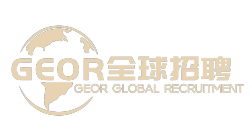Global Talent Recruitment Guide: How Companies Hire Overseas Personnel Efficiently
Global Talent Recruitment Guide: How to Recruit Overseas Personnel Efficiently
Under the wave of globalization, enterprises introduce overseas talents, it can quickly obtain international vision, cutting-edge technology and multicultural experience, so as to enhance innovation and market competitiveness. However, cross-border recruitment involves multiple challenges such as policy, culture and process. This article will provide a systematic solution for enterprises from strategic planning to implementation.
Clear recruitment objectives: precise positioning of positions and talent needs
Enterprises should first clarify the core value of recruiting overseas personnel. For example, if you need to explore emerging markets, you can give priority to sales or marketing talents with language skills and local resources in the target region; if you need to break through technical bottlenecks, you can target overseas experts who master cutting-edge fields (e. g. artificial intelligence, biotechnology). Through job demand analysis, the talent portrait is refined, including professional skills, cross-cultural collaboration ability, industry experience and other dimensions. For example, in order to develop new energy technologies, a technology company needs to recruit engineers with overseas laboratory experience and familiar with international standards.
At the same time, companies need to evaluate the job suitability of overseas talents. For example, management positions need to examine the candidate's leadership and cross-cultural team management experience; technical positions need to verify their technical achievements and project experience. Avoid inefficient recruitment due to ambiguous needs by developing clear evaluation criteria.
Policy and compliance: Building a legal framework for cross-border recruitment
The primary challenge of cross-border recruitment is policy compliance. Companies need to conduct in-depth research on the visa, work permit, labor law and other regulations of the target country or region. For example, some countries have clear restrictions on the proportion of foreign employees and the minimum salary standard; some industries (such as finance and medical) may require foreign personnel to have specific qualifications. It is recommended that companies work with professional bodies or legal counsel in advance to ensure that the recruitment process complies with local regulations.
In addition, companies need to improve their internal management systems. For example, establish a compensation and welfare system for overseas employees to ensure that they enjoy the same treatment as local employees or comply with international practices; develop cross-cultural communication and conflict resolution mechanisms to reduce management risks caused by cultural differences. Reduce recruitment and employment risks through compliance and institutionalization.
Channel expansion: reaching global talent in multiple dimensions
The selection of recruitment channels directly affects the efficiency of talent acquisition. Enterprises can expand the candidate pool through the following methods:
- international recruitment platform : use LinkedIn, Indeed, Glassdoor and other global recruitment websites to publish job information and accurately push it to the target population through algorithms; Use the "talent search" function provided by the platform to actively contact qualified candidates.
- cooperation with professional organizations : cooperate with headhunting companies and talent agencies to quickly locate high-end talents by using their resource networks; establish contacts with overseas universities and industry associations, participate in campus recruitment or industry forums, and directly contact potential candidates.
- social media and employer brand : operate corporate accounts on social platforms such as Facebook, Twitter and Instagram to display corporate culture and employee stories; Publish short videos through YouTube and TikTok to attract the attention of overseas talents. For example, an Internet company has successfully attracted a group of technical talents to send resumes by sharing the daily work of overseas employees.
Interview and evaluation: scientific screening and cultural adaptation
The interview should take into account both professional competence and cultural adaptation. Multiple rounds of interviews and multiple assessments are recommended:
- technical aptitude test : to verify the candidate's actual skill level through online programming challenges, case studies or simulation projects. For example, a design company requires candidates to submit a portfolio and present a design idea.
- Cross-cultural communication assessment : Examine candidates' cross-cultural adaptability through behavioral interview methods (such as STAR rules), such as asking about their past collaboration experience in multiple teams or how to deal with cultural conflicts.
- language proficiency verification : through professional language tests (such as TOEIC, IELTS) or situational dialogue, to ensure that candidates have the required language level of the position. For example, customer service positions require fluency in spoken and written language.
Entry and integration: full-cycle support for overseas talent landing
The successful landing of overseas talent requires systematic support from enterprises:
- induction training : provide induction training covering company culture, rules and regulations, and business processes to help them quickly adapt to the new environment; arrange "cultural mentors" to help them understand local customs and workplace etiquette.
- Life support : help solve practical problems such as visa, housing and children's education, such as providing rental subsidies or recommend international school resources; organize cross-cultural communication activities and help them build social networks.
- Career development : Develop a clear career path and training plan, such as providing regular technical training or leadership courses; Help them achieve personal growth through performance evaluation and feedback mechanisms.
Continuous optimization: establishing a long-term multinational talent management mechanism
Enterprises need to regularly resume recruitment and employment processes to optimize talent management strategies. For example, understand the needs and pain points of overseas talents through employee satisfaction surveys; analyze the input-output ratio of recruitment channels and adjust resource allocation; pay attention to industry policy changes and update compliance programs in a timely manner. Improve the efficiency and effectiveness of multinational talent management through continuous improvement.
Recruiting overseas personnel is an important part of a company's globalization strategy. Through clear requirements, compliance operations, channel expansion, scientific assessment and full-cycle support, companies can efficiently attract and retain international talent and inject new momentum into business development. With the deepening of globalization, transnational talent management will become a key component of the core competitiveness of enterprises.
